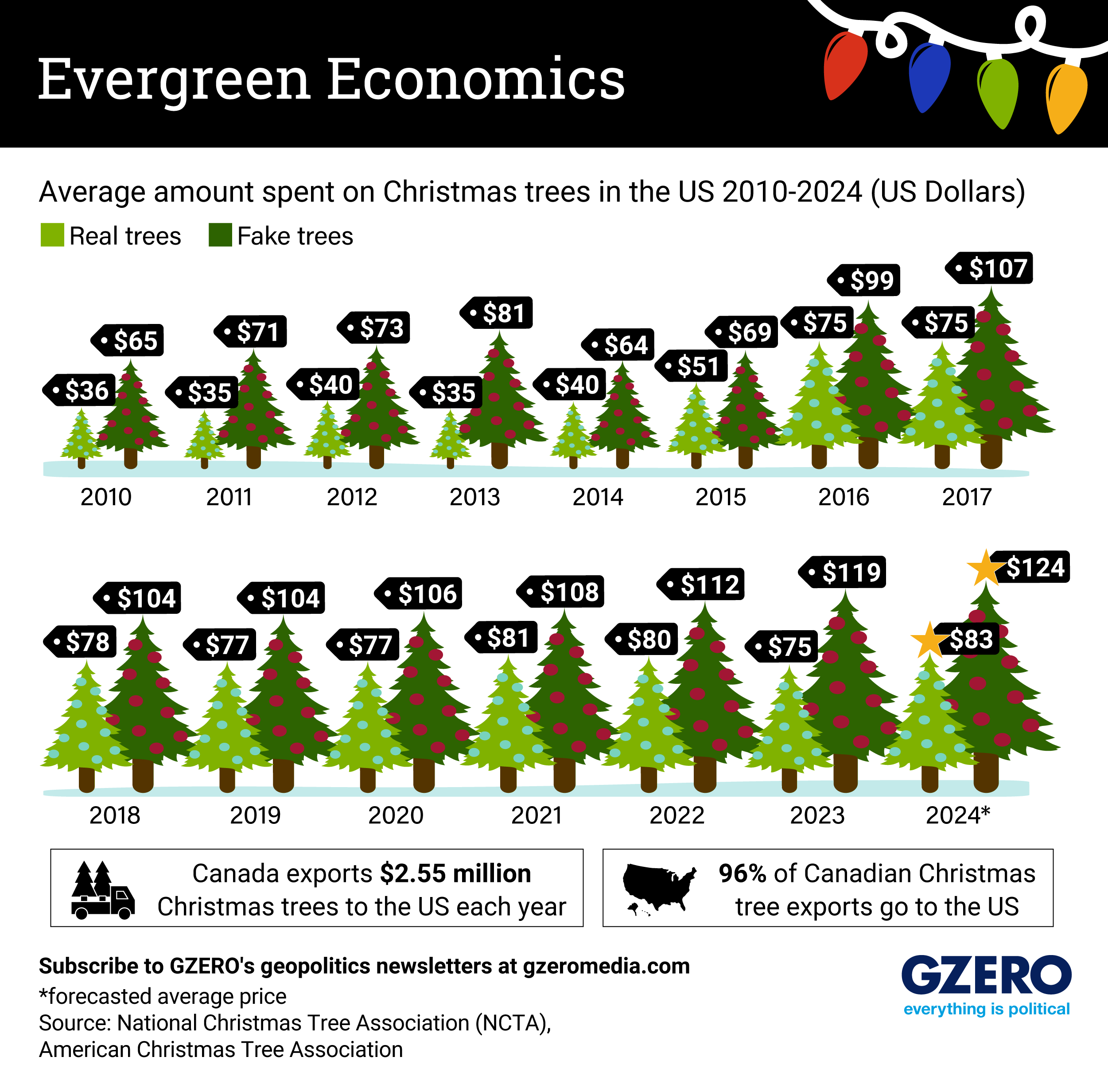December 12, 2024
Bah humbug! Christmas tree prices are up again in 2024, with the American Christmas Tree Association reporting that the average price has risen 10% over the last year. However, growers have reported steady demand since the pandemic, and supply is holding strong despite drought conditions and wildfires in recent months on the East Coast. That being said, location matters. Urban areas will see higher prices than rural regions.
The number of US Christmas tree farms fell sharply during the 2008 financial crisis and has continued to decline — so much so that 10% of the Christmas trees sold in the US come from Canada. Christmas trees take eight to 10 years to grow, making it difficult to start new farms and even harder to turn a profit. Inflation has raised the cost of fertilizer and fuel, and these costs are being passed on to consumers.
Meanwhile, prices for fake trees, which 78% of consumers polled said they intend to buy, are also up $5 on average this year. But fake trees have a far greater range of prices, with some costing as much as $1,000.
Environmental economics. Interestingly, the environmental calculus favors chopping down real trees over manufacturing plastic replicas. Researchers suggest that reusing an artificial tree three to five times can reduce carbon footprint, but each real tree purchase supports forest ecosystems and local farmers.
More For You
Immigration and Customs Enforcement (ICE) agents check the identity documents of a group of agricultural workers at a grocery store parking lot during an immigration raid in Mecca, California, U.S. December 19, 2025.
REUTERS/Daniel Cole
A year into US President Donald Trump’s second term, America’s immigration policy has undergone one of its most sweeping resets in decades.
Most Popular
Think you know what's going on around the world? Here's your chance to prove it.
Big global stories. Real conversations with world leaders. Our award-winning global affairs show, GZERO World with Ian Bremmer, goes beyond the headlines on the stories that matter most. Here’s a look back at the 10 most quotable moments from this year’s episodes.
Holiday spending is rising, but many households are paying more for fewer items as prices climb. Higher-income consumers continue to outspend lower-income groups, and signs of financial strain persisted heading into peak shopping months. See the full Consumer Checkpoint from Bank of America Institute.
© 2025 GZERO Media. All Rights Reserved | A Eurasia Group media company.
